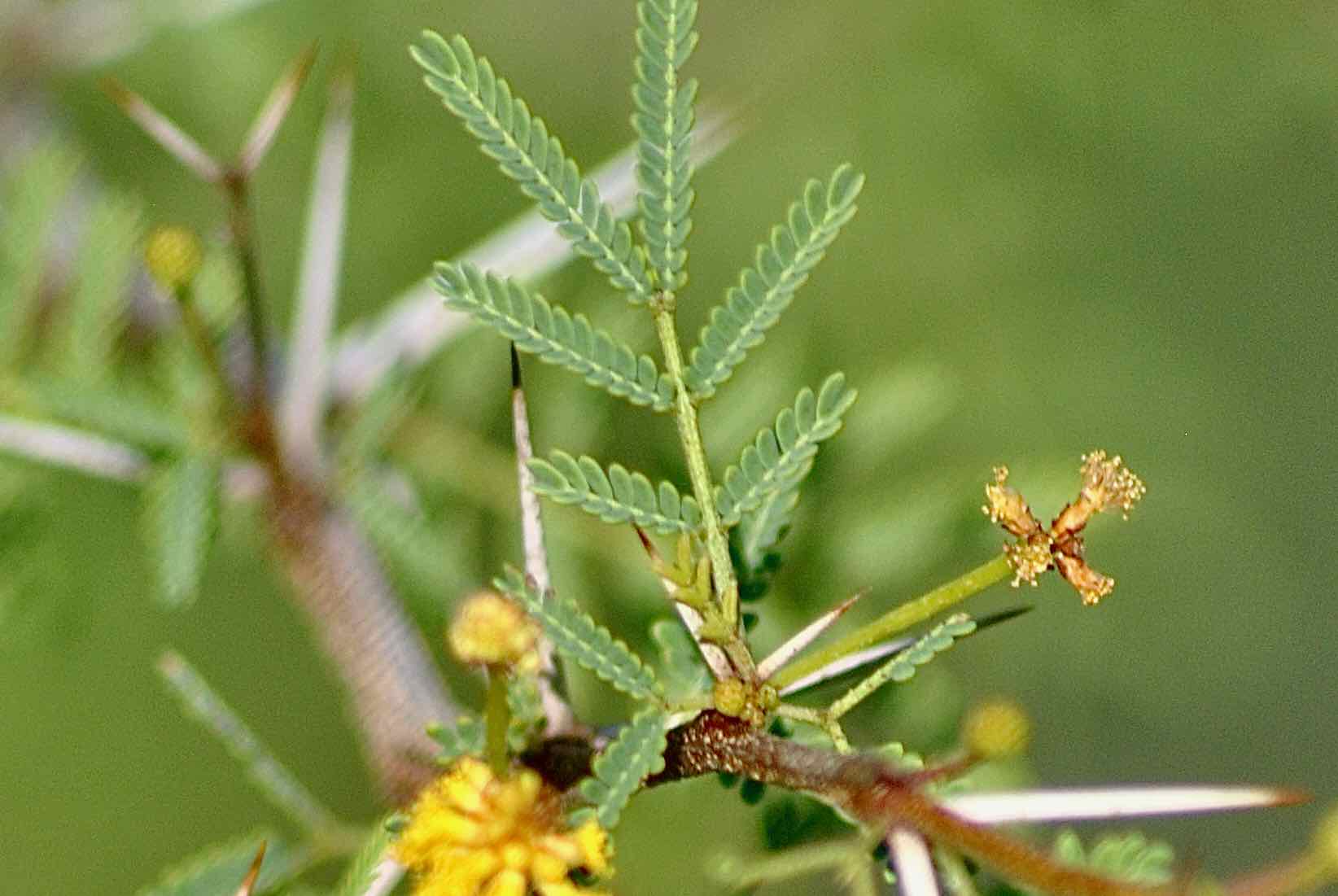
Pineland acacia, photographed at National Key Deer Refuge, Big Pine Key, Monroe County, in December 2013.
Pineland acacia is a Florida original, a Florida native found only in Florida, unlike its close cousin, sweet acacia, which is also a Florida native but has a much more cosmopolitan distribution.
They're both known scientifically as Vachellia farnesiana, but our guy, pineland acacia, comes with the added designation var. pinetorum. In other words, they're both members of the same species, pineland being different enough from sweet to be considered a distinct variation or variety. But it wasn't always so. Until relatively recently, pineland acacia was recognized as its own species, Acacia pinetorum, and if you research the plant, you'll come across a few references to that name.
As we said, pineland acacia is a Florida native found only in Florida. Scientists have a word for such species known to one place: endemic. Its native range includes 10 coastal counties from Citrus on the Gulf and Volusia on Atlantic southward through the Keys. The most likely place to find the plant is the pine rockland habitats of Miami-Dade and the lower Keys, particularly Big Pine Key and National Key Deer Refuge.
A word or two about acacias in general: There are something like 1,200 species of acacia worldwide, with sweet acacia and pineland acacia the members native to Florida. Typically, but not always, they are thorny trees or shrubs, with ball-like flowers. The crown of thorns placed on Christ's head before his crucifixion came from an acacia tree. The genus name, Vachellia, comes from the Greek word meaning thorny. Pineland acacia fits the bill. It is a small, thorny shrub with bright yellow puffball flowers. It typically grows to about three to six feet tall, but can reach 10 feet. It can have one or multiple trunks studded with thorns; the branches tend to zig-zag and are armed with inch-long long, sharp thorns that come in pairs. Bloom time is spring into summer; the flowers are followed by brown pods, sometimes curved, sometimes straight, each of which have between three and 10 seeds inside.
When in bloom, pineland acacia can put out dozens, even hundreds of flowers, making for a spectacular display. It's one of the reasons why it's used in landscapes as an accent planting. What's more, the flowers are extraordinarily fragrant (the flowers of its sibling, sweet acacia, are used to make perfume). It's also used as a barrier planting, a kind of natural barbed wire.
The differences between our guy and sweet acacia are subtle. Sweet acacia can be considerably taller, reaching a maxium of 15 feet versus pineland's maximum of 10, but that doesn't help much unless you're looking at a very tall acacia. Among the primary differences are variations in the structure of the leaves. Both sweet and pineland have compound leaves, with small leaflets. On sweet acacia, the petioles, or leaf stems, have hairs; on pineland, they don't. The secondary veins in the leaflets of pineland are less apparent than they are on sweet.
Pineland Acacia serves as host to the larvae of the acacia blue butterfly, formerly known as the nickerbean blue butterfly, mainly on Big Pine and Bahia Honda keys. The flowers do attract pollinators but relatively few butterlies. The foliage is also browse for the Key deer.
The species name, Farnesiana, honors Cardinal Odoardo Farnese, the first European to cultivate the plant during the 1600s in Italy. Other common names for pineland acacia include pineland wattle and pine acacia. It is a member of Fabacease, the pea family.
Key Deer National Refuge
Photo Gallery — Click on photo for larger image
U.S. Department of Agriculture Distribution Maps






